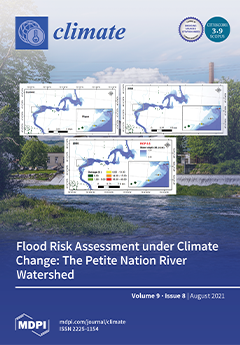In drylands, most studies of extreme precipitation events examine effects of individual years or short-term events, yet multiyear periods (>3 y) are expected to have larger impacts on ecosystem dynamics. Our goal was to take advantage of a sequence of multiple long-term (4-y) periods (dry, wet, average) that occurred naturally within a 26-y time frame to examine responses of plant species richness to extreme rainfall in grasslands and shrublands of the Chihuahuan Desert. Our hypothesis was that richness would be related to rainfall amount, and similar in periods with similar amounts of rainfall. Breakpoint analyses of water-year precipitation showed five sequential periods (1993–2018): AVG1 (mean = 22 cm/y), DRY1 (mean = 18 cm/y), WET (mean = 30 cm/y), DRY2 (mean = 18 cm/y), and AVG2 (mean = 24 cm/y). Detailed analyses revealed changes in daily and seasonal metrics of precipitation over the course of the study: the amount of nongrowing season precipitation decreased since 1993, and summer growing season precipitation increased through time with a corresponding increase in frequency of extreme rainfall events. This increase in summer rainfall could explain the general loss in C
3 species after the wet period at most locations through time. Total species richness in the wet period was among the highest in the five periods, with the deepest average storm depth in the summer and the fewest long duration (>45 day) dry intervals across all seasons. For other species-ecosystem combinations, two richness patterns were observed. Compared to AVG2, AVG1 had lower water-year precipitation yet more C
3 species in upland grasslands, creosotebush, and mesquite shrublands, and more C
4 perennial grasses in tarbush shrublands. AVG1 also had larger amounts of rainfall and more large storms in fall and spring with higher mean depths of storm and lower mean dry-day interval compared with AVG2. While DRY1 and DRY2 had the same amount of precipitation, DRY2 had more C
4 species than DRY1 in creosote bush shrublands, and DRY1 had more C
3 species than DRY2 in upland grasslands. Most differences in rainfall between these periods occurred in the summer. Legacy effects were observed for C
3 species in upland grasslands where no significant change in richness occurred from DRY1 to WET compared with a 41% loss of species from the WET to DRY2 period. The opposite asymmetry pattern was found for C
4 subdominant species in creosote bush and mesquite shrublands, where an increase in richness occurred from DRY1 to WET followed by no change in richness from WET to DRY2. Our results show that understanding plant biodiversity of Chihuahuan Desert landscapes as precipitation continues to change will require daily and seasonal metrics of rainfall within a wet-dry period paradigm, as well as a consideration of species traits (photosynthetic pathways, lifespan, morphologies). Understanding these relationships can provide insights into predicting species-level dynamics in drylands under a changing climate.
Full article





